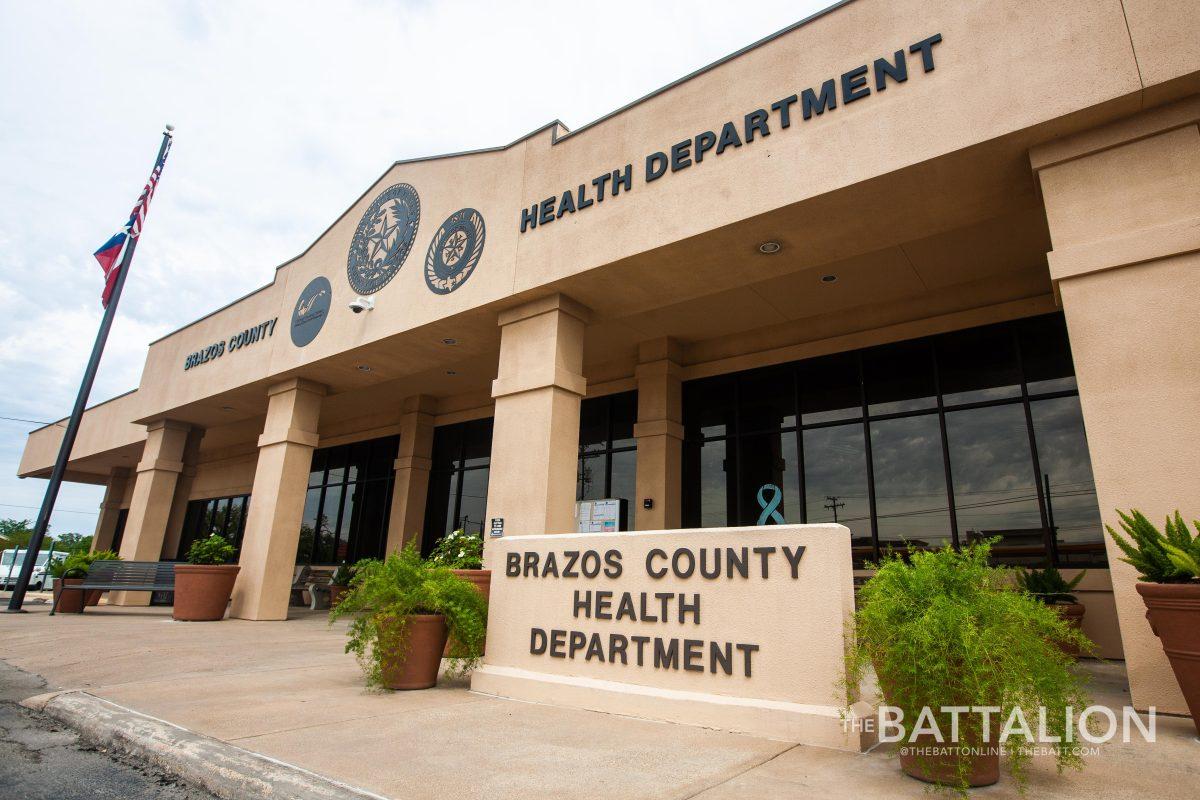On Thursday, July 27, Brazos County Health Authority Dr. Seth Sullivan, MD, and Workforce Development Coordinator and Public Health Information officer Mary Parrish issued a report on Facebook live regarding the first monkeypox case in Brazos County, as well as an update on the current COVID-19 report.
Sullivan began with the Brazos County COVID-19 report, and said omicron cases are still very high, with 70 cases occurring in June and jumping to 80 cases within a 14-day average in July. Sullivan said many residents are performing at-home tests, likely resulting in an underreporting of infections. Sullivan said COVID-19 vaccines are still encouraged.
Sullivan proceeded with information regarding the first confirmed case of monkeypox in Brazos County, and said the individual who tested positive was in close contact with a monkeypox case in the Dallas area. Sullivan said in Texas there are 231 cases, with 228 cases being male individuals while only three have been female.
Sullivan clarified the majority of monkeypox cases are transmitted through direct skin-to-skin contact, which includes, but is not limited to, sexual contact. He said scabs, rashes, bodily liquids and respiratory secretions after prolonged face-to face exposure should be avoided. Physical contact with items previously touched by infected individuals can also cause transmission, and pregnant women are susceptible to spread the infection to the growing fetus.
Sullivan said identification of monkeypox is visually discernible, with discrete lesions, raised and blistered with a fluid vesicle, similar to chickenpox, appearing on the skin. Locations of these blisters may occur on the face, torso, palms of the hands or soles of the feet.
Vaccines have been ordered in relatively low quantities due to high demand, Sullivan said. Those at highest risk, such as those who have been exposed to infected individuals, will be given the vaccine first in order to mitigate symptoms. An FDA approved antiviral medicine for smallpox, though not certified for monkeypox, can still be taken, although most individuals are not required to take it.
Sullivan moved on to the FAQ section of the livestream, primarily emphasizing the differences between COVID-19 and monkeypox.
Sullivan said, unlike COVID-19’s form of transmission, which includes asymptomatic carriers and the formation of highly contagious aerosolized air in concentrated areas, monkeypox’s only form of transmission is skin contact.
Sullivan said that due to less versatile modes of infection and available medical treatments, monkeypox transmission is easier to control.
“There are many public health experts who are optimistic that this can be, if we take it seriously and take charge of this, that we can completely control this, and by control I mean stop [monkeypox] transmission entirely,” Sullivan said.
Sullivan then answered questions from the viewers. The questions consisted of quarantine proceedings, how schools would be affected, what the incubation period of monkeypox is, how to identify a lesion, what the timeframe of skin contact is and when the vaccines will be coming in.
For monkeypox’s quarantine proceedings, Sullivan said he thinks that the virus is transmittable before the rash starts to develop.
“We know that is when we are most contagious,” Sullivan said. “It’s about that window and all through the time the lesions are there we are considered contagious … Really, we’re looking at it until lesions have resolved.”
Sullivan said that as of now, the health district is not as worried about monkeypox in schools when compared to COVID-19.
“[COVID-19] is almost silent the way it gets transmitted … and with monkeypox we’re not seeing that,” Sullivan said. “What we see is somebody who has lesions in that direct skin-to-skin contact and so we would not expect mass transmission through a school. It’s different that way in its transmission mode.”
Sullivan said the incubation period for monkeypox is about one to two weeks.
“Of course there is a range, and that range is the variability of our immune systems and how much of the virus we were exposed to,” Sullivan said. “If we are in direct contact with somebody with monkeypox, we do need to take that seriously and we do need to be mindful that there is an incubation period.”
Sullvian said visual signs of monkeypox are easy to spot.
“These are very characteristic lesions,” Sullivan said. “They’re large, they’re often painful, some can be itchy and it’s not your typical pimple. There’s already some great images online, the CDC has posted some good pictures of what [monkey]pox lesions look like, so I would just familiarize myself with those.”
With the high demand of monkeypox vaccines, Sullivan said that it is unknown when the vaccine will be available in Brazos County.
Sullivan said hospitalization for monkeypox isn’t commonly required, but the consequences of painful lesions do not make it something to brush off.
“Most people with monkeypox do just fine, they heal on their own and they don’t require hospitalization, they don’t require incubation … but we do heal from it,” Sullivan said.










